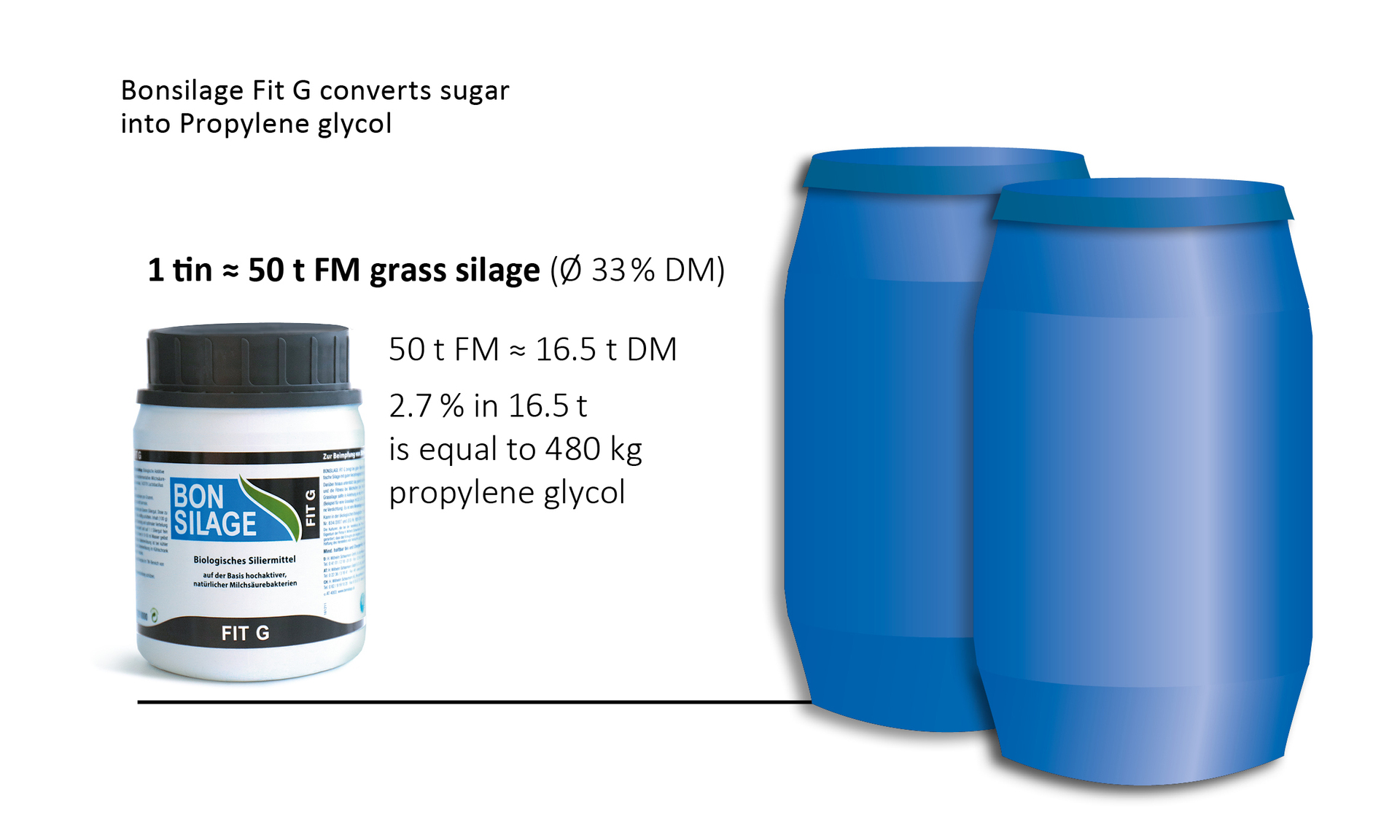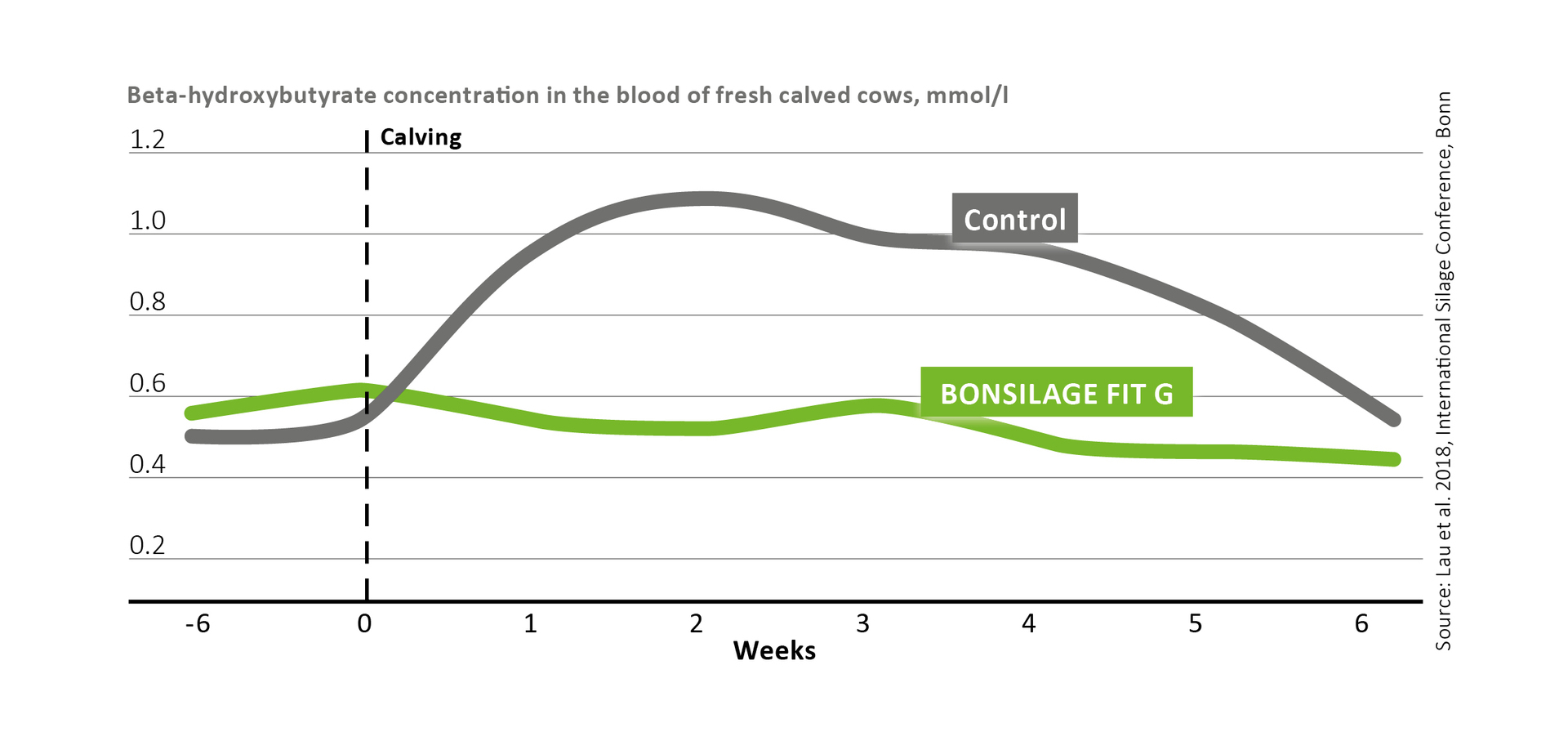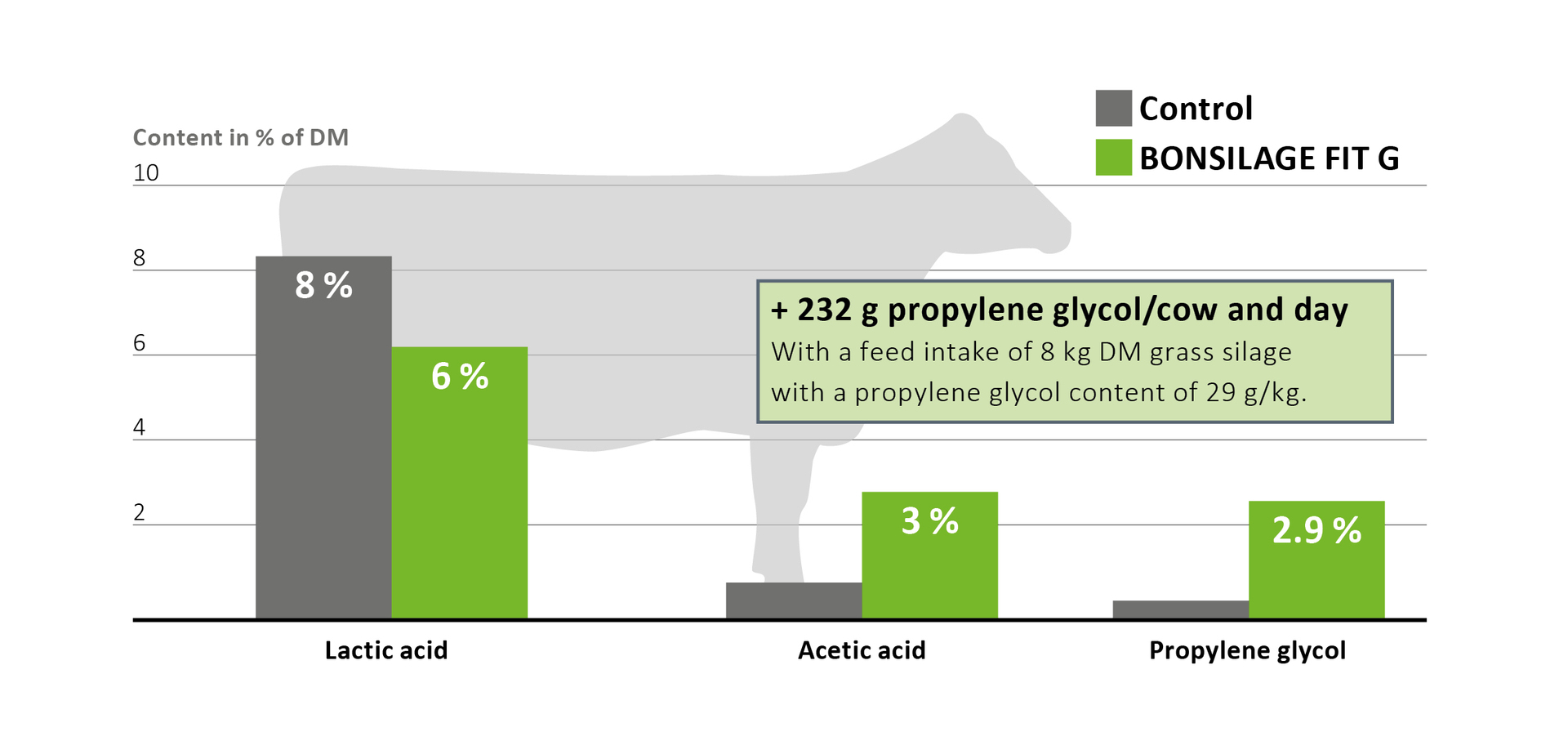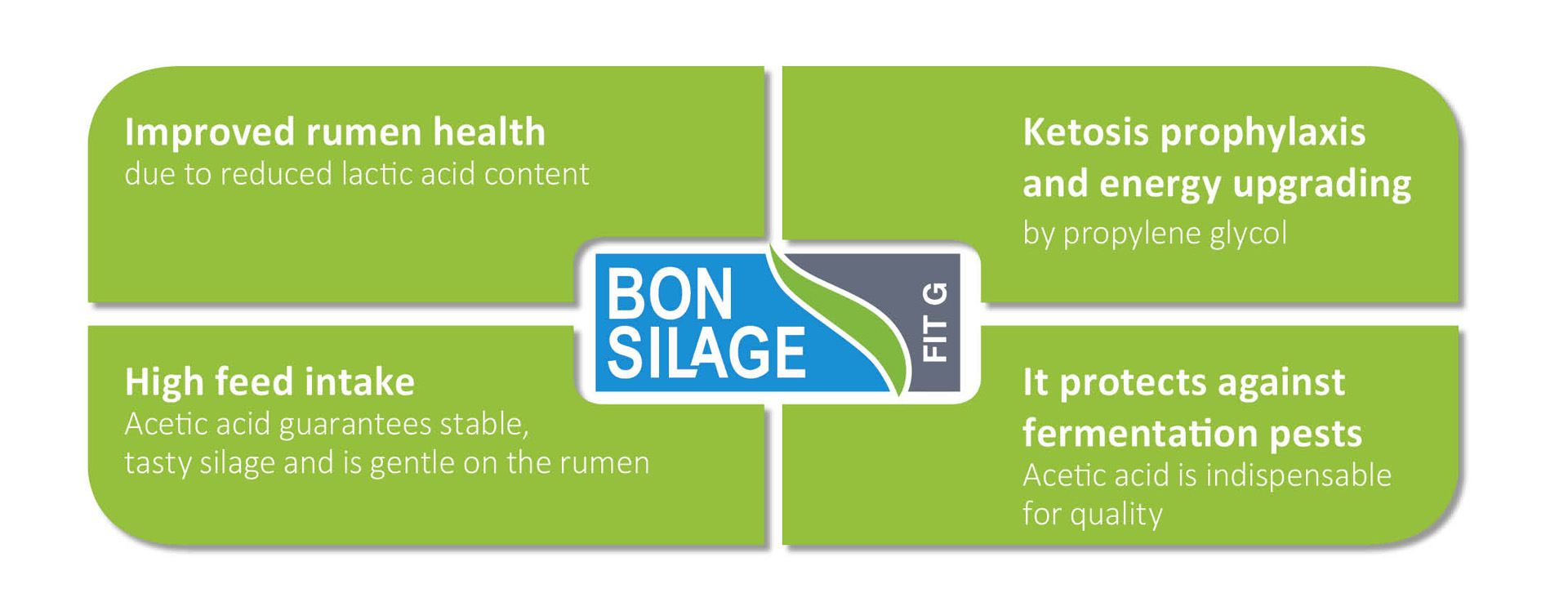
BONSILAGE FIT G converts sugar into valuable Propylene glycol
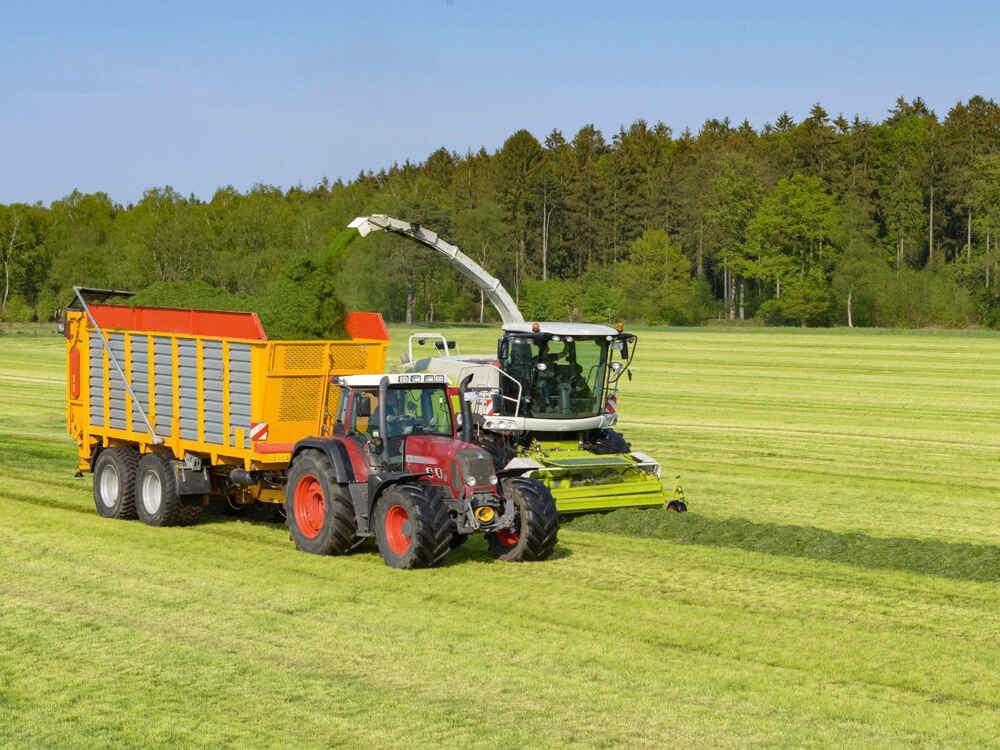
Untreated high-energy grass silages often have high residual sugar contents and low aerobic stability. Acidoses of the cows and reheating of the silage are the consequences.
The lactic acid bacteria in BONSILAGE FIT G converts sugar into propylene glycol, increase the stability of the grass silages and support with the formed acetic acid a rumen milieu, which is suitable for ruminants. The results of the grass silages analysis 2019 prove clearly a positive effect of BONSILAGE FIT G to stability and energetic enhancement (see fig. 3).
More propylene glycol
The ISF Schaumann research team identified in more than 800 analyses from grass silage 2018 treated with Bonsilage Fit G an average amount of propylene glycol of 2,7 % in DM. Dairy farmers who treated their silage with Bonsilage Fit G, report about significantly better fertility of the Herd. The increased production of propylene glycol through the use of bonsilage Fit G and the positive effect on fitness of the cows has also been scientifically proven (see fig. 2).
Measurably more cow fitness
With the use of Bonsilage Fit G your herd profits several times. The rumen critical lactic acid is reduced and the physiologically more valuable acetic acid is increased. This also ensures stability of the silages after opening and has a positive effect on feed intake. The average amount of propylene glycol in DM is 2.7%. It completes the fermentation acid pattern and improves the energy supply of your cows without putting them at risk of developing acidosis. This is urgently needed due to the high percentage of maize in the rations, and it makes an important contribution to the health of dairy herds. BONSILAGE FIT G can reduce residual sugar levels by over 30%. This significantly reduces the risk of rumen acidosis and increases the flexibility of the ration composition.
At www.bonsilage.de, practitioners report on their positive experiences with the use of BONSILAGE FIT G
